Indoor Sport Services Training Guide
Our Indoor Rowing Training Guide is the ultimate training resource for the Indoor Rower. Written by top education and coaching specialists, it includes information on technique and training, with programmes on cross-training, 2,000m and marathon race training, weight management and keep fit. There are guest chapters written by top names such as Jurgen Grobler and Chris Shambrook as well as dedicated sections on psychology, nutrition and weight training.
Training Considerations - Children Are Not Small Adults
<< Exercise and Young PeopleBiological Age >>Craig Sharp, Professor of Sports Medicine at Brunel University states that: "children are not small adults in terms of their exercise physiology; their responses to exercise may be quite different."
Whilst this is undoubtedly true there are many cases of young children performing to the highest level in sports like gymnastics and swimming, and there is record of children as young as 7 completing a marathon in under 3hrs 30 mins. So it is clear that children are capable of outstanding performances, the side effects of these performances may, however, be drastic in later life. It is important then for coaches to understand that their role is not only to get the most out of their charges but also to protect them from themselves and in many cases over-ambitious parents. For more information about the physiological changes that take place during puberty see Changes at Puberty later on in this Section.
Children of different ages vary greatly in their development and for this reason training can be separated into different Key Stages. These are the same five key stages identified by chronological age in British schools, however biological and chronological ages are not always the same, for this reason a section called Biological Age has been added after the information about the different Key Stages.
Key Stage 1 (FUNdamental), is for children of 4 to 7 years and should be devoted to developing the child?s fundamental movement skills. Key Stage 2 (Learning to Train) is for children of 8 to 11 years and should be devoted to overall sports skills development and the development of global co-ordination. Key Stage 3 (Training to train) is for children of 11 to 14 years and should be devoted to developing the young person?s physiology and further developing sports specific skills. Key Stage 4 (Training to compete) is for young people of 15 to 18 years and should be devoted to fine tuning, not only the sports specific skills but also the physiology. Key Stage 5 (Training to win) is for young adults 18 to 22+ years and should be devoted to maximising potential. It is important to understand that the rate of maturation of children varies according to the sex of the child, and also from child to child. For this reason it is sometimes possible to progress children more rapidly through the Key Stages if they are early developers, and spend more time in the lower key stages if they are late developers. A fuller explanation of the physiological differences between children and adults can be found at the end of this section for those who are interested.
Table 10.1
| The Five Key Stages | |||||||||||||||
|---|---|---|---|---|---|---|---|---|---|---|---|---|---|---|---|
| Age | |||||||||||||||
| 4 | 5 | 6 | 7 | 8 | 9 | 10 | 11 | 12 | 13 | 14 | 15 | 16 | 17 | 18 | ------> |
| KS1 | KS2 | KS3 | KS4 | KS5 | |||||||||||
| Fundamental movement skills | Overall sports skills development | Building the engine and sports specific skills | Fine tuning the engine and sports specific skills | Maximise potential | |||||||||||
Key Stage 1: FUNdamental (4 to 7 Years)
Emphasis of this stage of learning is developing fundamental movement skills. From the name given to this stage it can be seen that the overriding criteria is for the participants to enjoy themselves as these are the building blocks for an active lifestyle as an adult. This requires a well structured programme to develop physical capacity using a wide range of sports and activities where fundamental movement skills are mastered. Before puberty stamina (endurance) improvements are mainly due to an improved economy of movement where oxygen consumption for any given activity goes down without increase in VO2max. Therefore the emphasis should be on teaching technique during all activities, and improving strength through bodyweight exercises and the use of medicine balls and Swiss balls. The activities should revolve around the school year, and where ever possible activity camps should be attended in the summer and winter holidays.
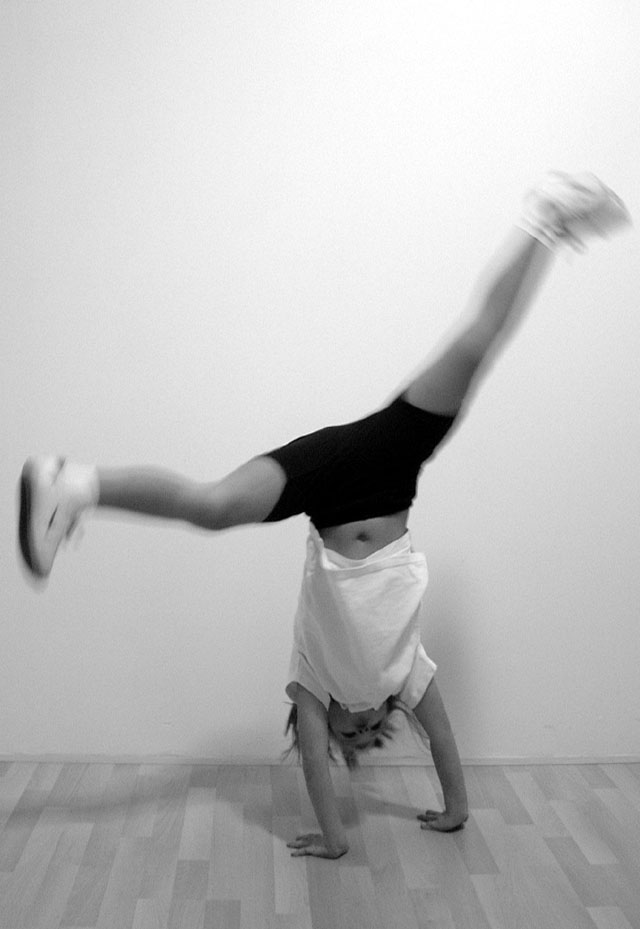

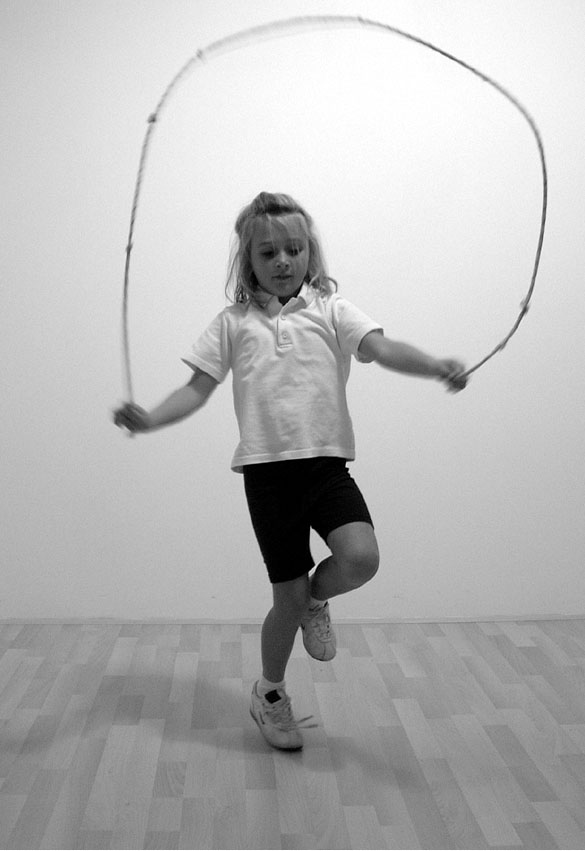

A five year old learning movement skills
It is recommended that one sport is not practiced more than twice per week, and participation in other sports should take place three to four times per week. If at the end of the FUNdamental stage the child does not wish to continue in competition then the skills learned in this stage will not be wasted but will be beneficial in terms of their interaction with others and general health and well being.
Key Stage 2: Learning to Train (7 to 11 years)
This stage emphasises the learning of overall sports skills. During this phase the athlete learns how to train and become aware of the different forms of training and their effect. Where the long-term aim is towards a specific sport then specific skills are developed. They are introduced to the basic technical and tactical characteristics of the sport as well as the pertinent warm-up, cool down and stretching exercises.
At this stage they are introduced to the relevance of hydration, nutrition and the relationship between training, recovery and regeneration. Mental preparation is developed and programmes will include tapers and recovery.
Indoor rowing categories start at J11 and so it is during this stage that the machine is introduced. It is quite normal for the legs to be stronger than the upper body and arms and this may manifest itself in the athlete not swinging the body and or not being able to draw the handle into the body at the finish. The reduced body swing should be tolerated until the upper body strength is developed. This can be helped by gymnastic activities which include hand balancing, cartwheels and walking on the hands.
Whilst training remains focussed on learning the basics, during competition the athletes are encouraged to do their best and strive to win.
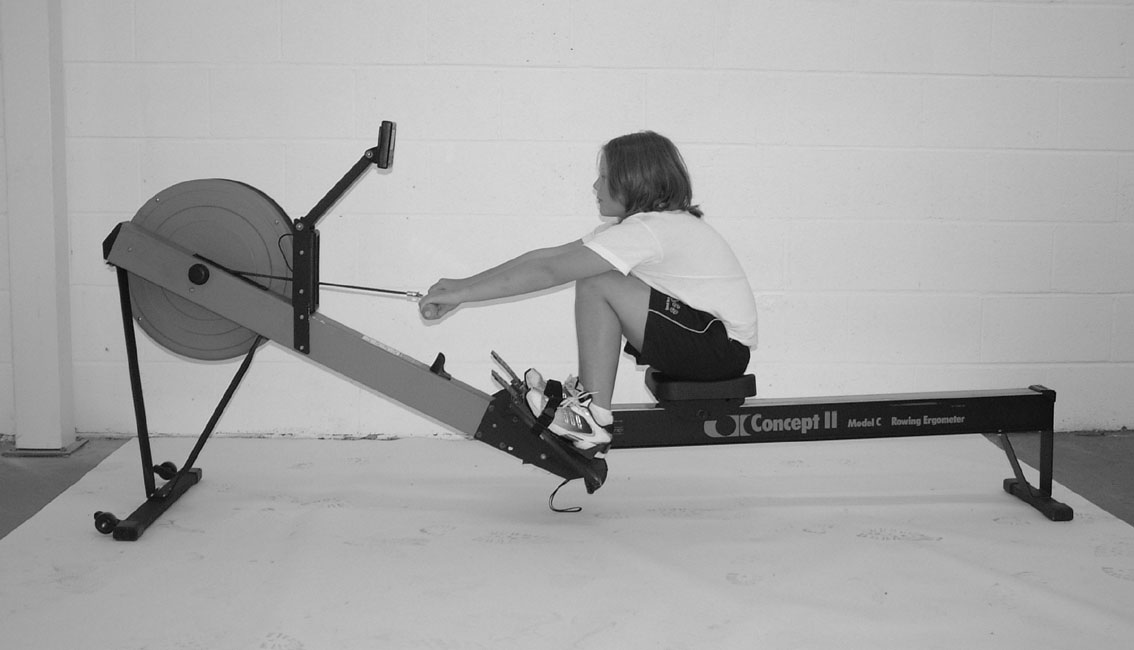
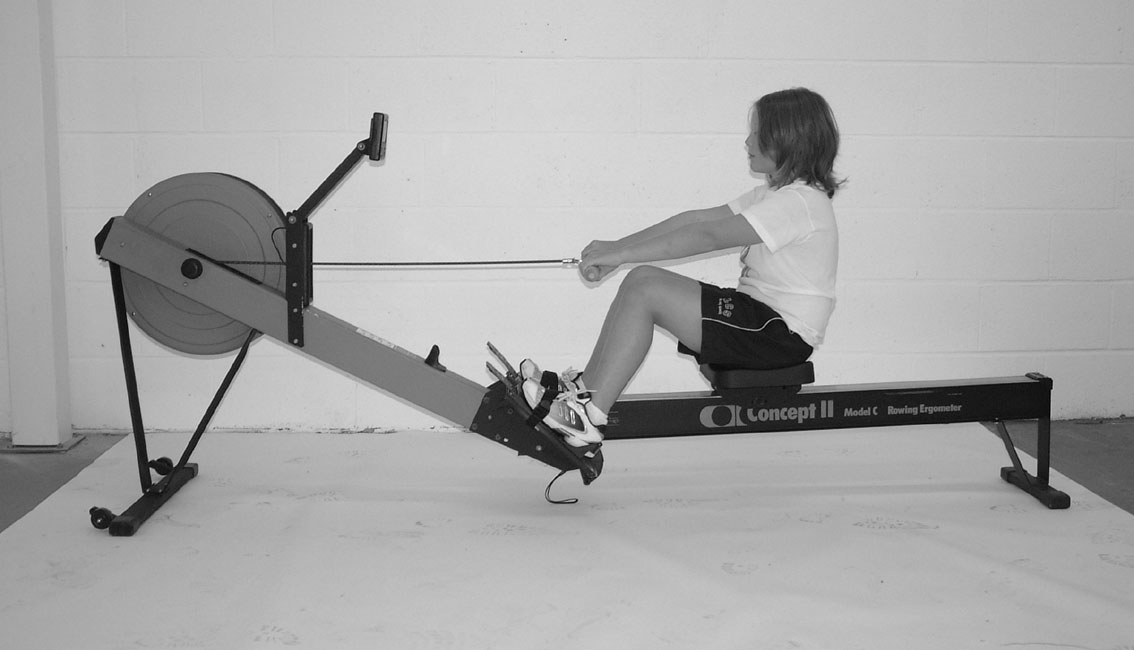

A nine year old exercising on the rower
Key Stage 3: Training to Train (11 to 15 years)
The training to train stage is characterised as building the engine and sports specific skills during this the critical and sensitive period of physical and skill development. During this period it is important not to over compete as this will take up valuable training time. Competition is still important to enable the athlete to meet the physical and mental challenges presented. It is also important to develop technical skills in a competitive environment. The ratio between competition and competition/training is nominally 25%-75%. This may vary depending on the nature of the sport and the competition component may be higher in sports that are predominantly physical such as indoor rowing and less in sports that require a high level of skill. The most important aspect of this period is to match the volume, frequency and intensity of the training programme to the individual to take advantage of accelerated adaptation, (described in more detail later).
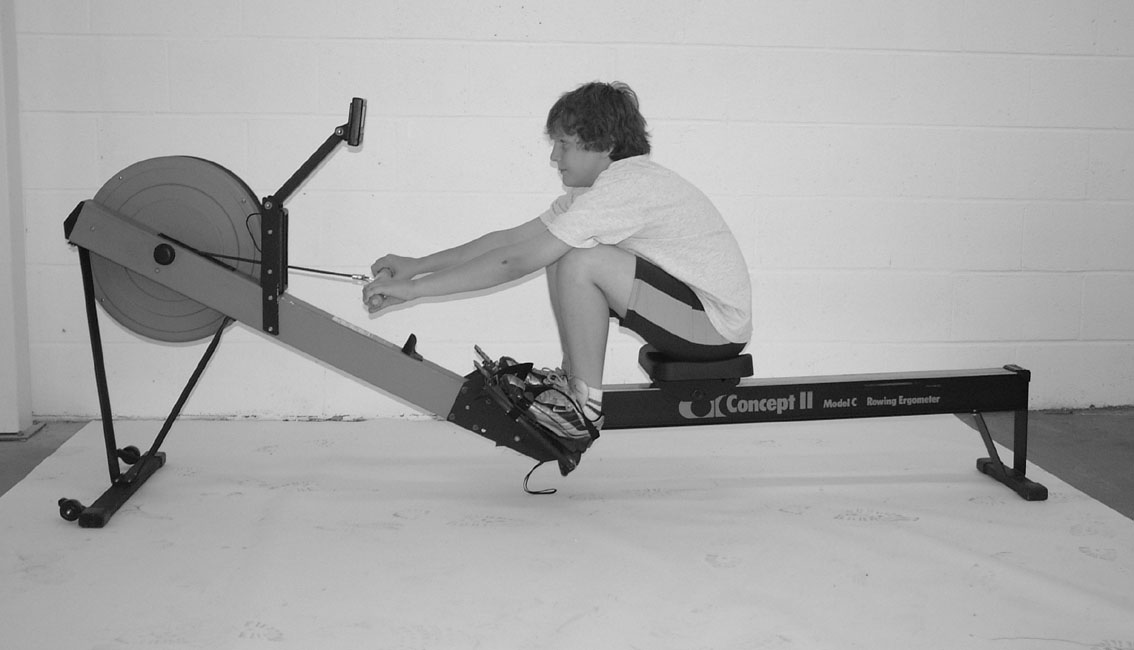
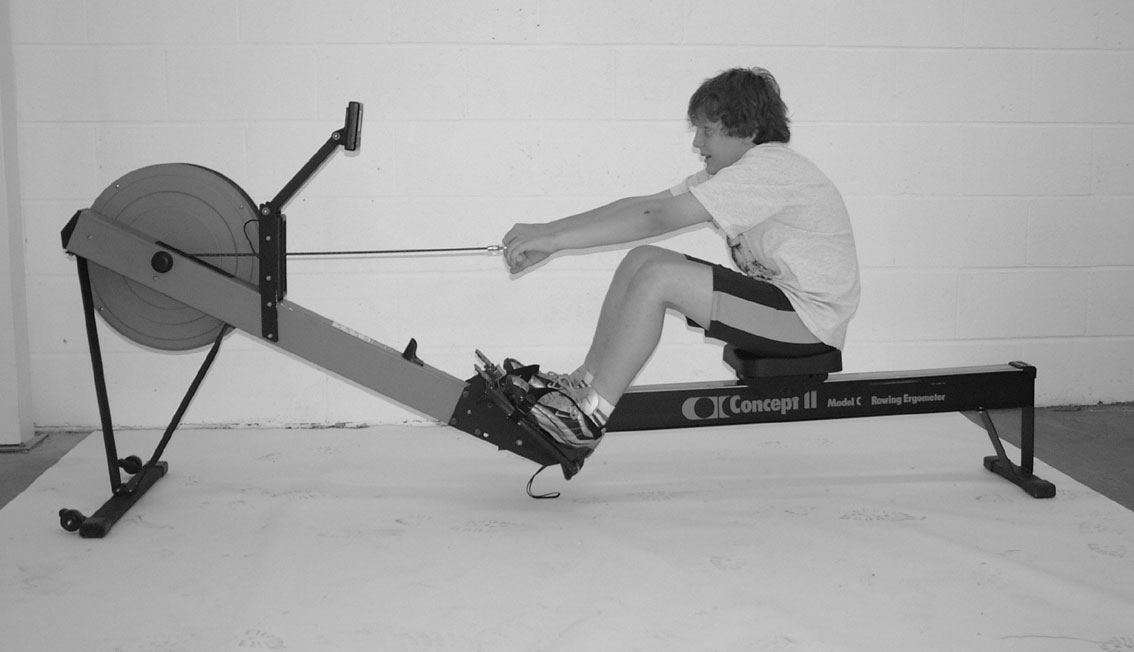
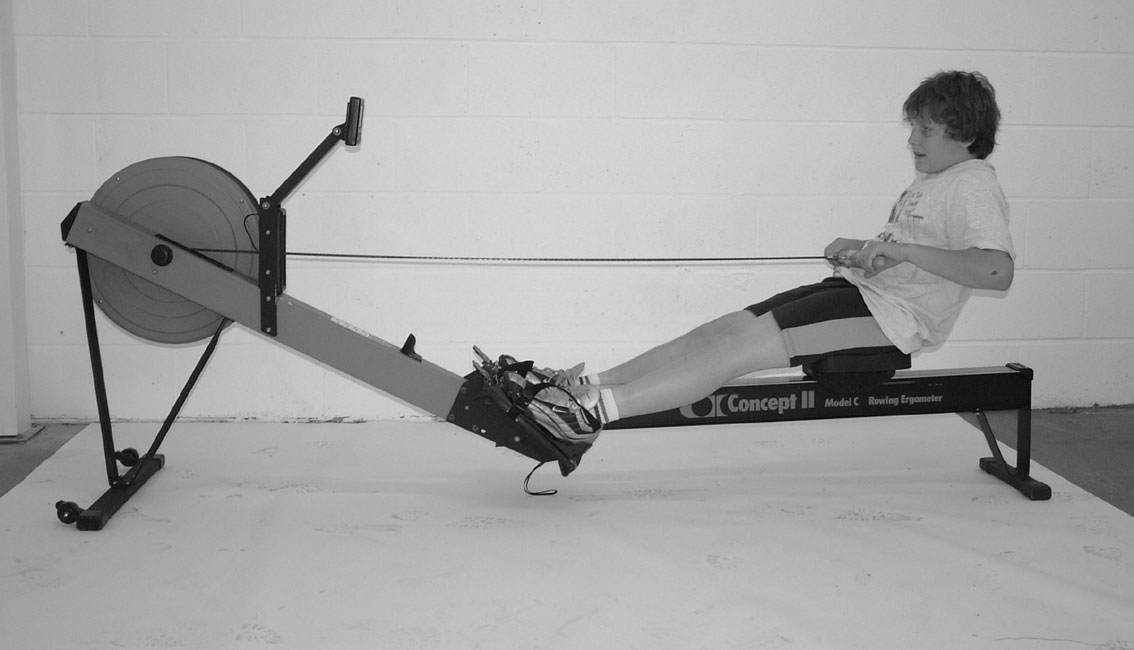
A 12 year old exercising on the rower
Key Stage 4: Training to Compete (15 to 18 years)
Characterised by the fine-tuning of the engine and sport specific skills. We move onto this stage once the Training to Train stage objectives have been reached. Competition to training ratio changes to 50/50 so that half the training is devoted to technical, tactical skills and increased fitness level while the other half is devote solely to competition training and to competitions. Training intensity increases and becomes more sport-specific as an all year round programme is developed to meet the individual needs of the athlete, aimed at resolving individual weakness. This will involve technical, physical and psychological development programmes designed to raise the athlete?s performance for competition. The leg/upper body strength imbalance should have been corrected by now and a normal body swing, which represents 20% of the overall stroke length, should be evident.
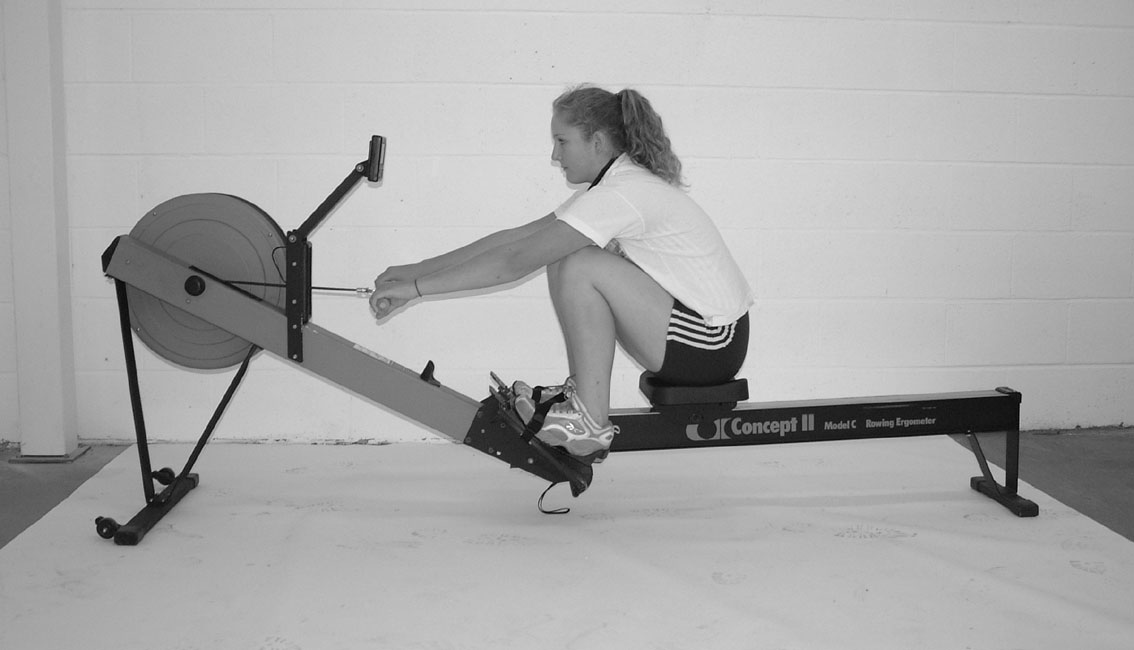
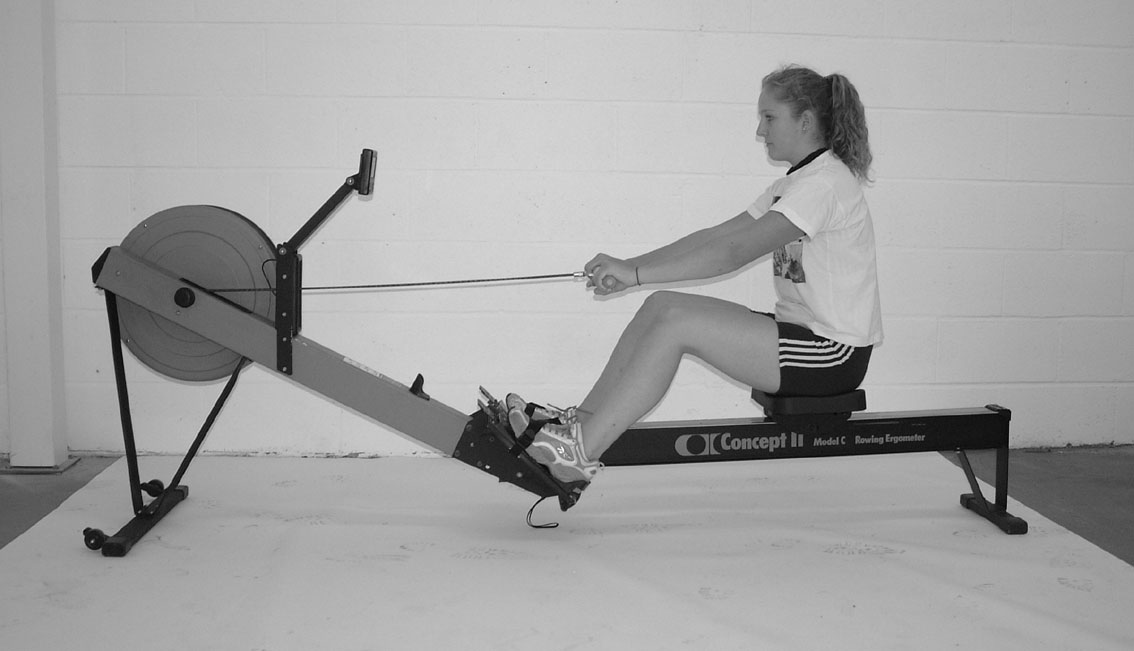

A 15 year old exercising on the rower
Key Stage 5. Training to Win (18 to 22 years)
The aim is to maximise sports specific skills. This is the final stage, which starts with males at age 18 and females at age 17. All of the athlete?s physical, mental and technical capacities are fully established and so the focus of training is devoted to optimising performance. Training volume and intensity are increased and developed to bring the athlete to a peak for major competitions. Recovery and regeneration elements of the programme are essential to prevent physical and mental burn out.

